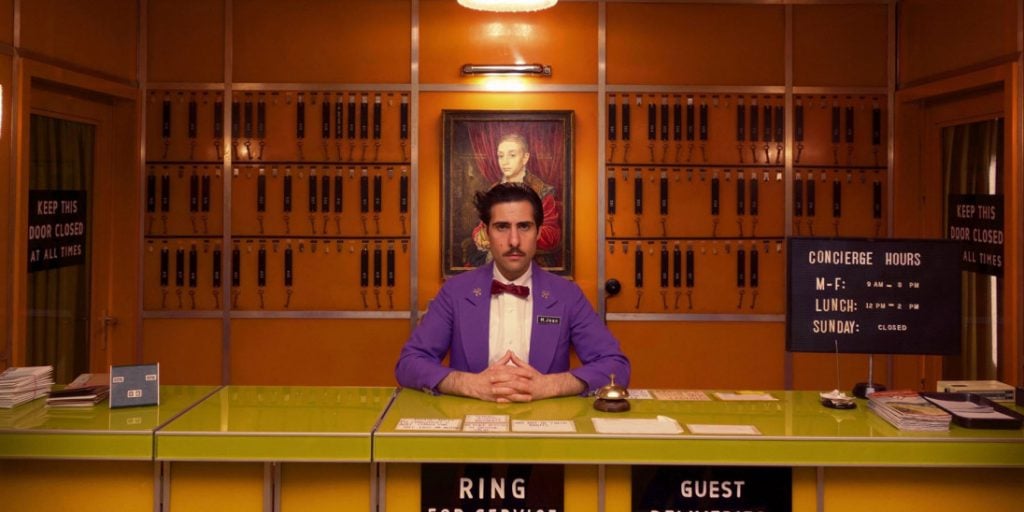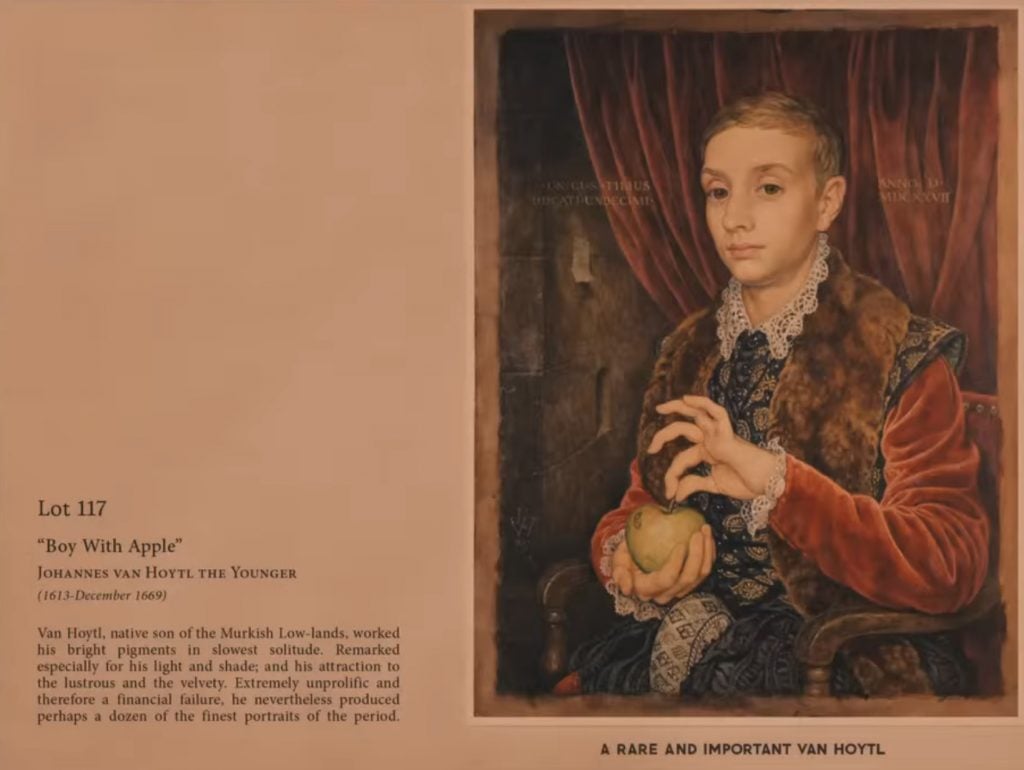Pop Culture
As Seen on ‘The Grand Budapest Hotel’: A Heist-Worthy Renaissance Painting
The canvas was at the center of an elaborate plot characteristic of filmmaker Wes Anderson.

The canvas was at the center of an elaborate plot characteristic of filmmaker Wes Anderson.

Brian Boucher

Alongside a veritable galaxy of stars including Ralph Fiennes, Willem Dafoe, Saoirse Ronan, and Tilda Swinton, a painting plays a pivotal role in the critically acclaimed Wes Anderson film The Grand Budapest Hotel (2014), which celebrates its 10th anniversary this year. The film was Anderson’s highest-grossing to date, raking in some $173 million at the box office worldwide, garnering nine nominations at the Academy Awards, including Best Picture, and winning four. So, it’s arguably one of the most visible roles for a painting in recent cinema.
Let’s take a look at how the artwork plays into the plot, which is trademark Anderson, featuring more twists and turns than a minotaur’s maze. (Spoilers follow!)
Fiennes stars as Monsieur Gustave H., the concierge of the Grand Budapest Hotel, a mountaintop getaway in the fictional Eastern European nation of Zubrowska. He regularly carries on affairs with his elderly guests, including the Dowager Countess Céline Villeneuve Desgoffe-und-Taxis, played by Swinton. When she dies, she leaves the priceless canvas Boy with Apple, by fictional Renaissance master Johannes van Hoytl the Younger, to Monsieur Gustave (who opines that “The rest of his shit is worthless junk”).

Screenshot of an auction house description for Boy With Apple in The Grand Budapest Hotel (2014).
Gustave’s claim to the painting, however, is challenged by the Dowager Countess’s son Dmitri Desgoffe-und-Taxis (Adrien Brody), prompting the concierge to steal the painting with his protégé Zero (Tony Revolori). The escapades that unfold include a jail break, a regime change, and a second will, secreted in the frame of Boy With Apple, that makes Gustave the owner of the Grand Budapest Hotel.
British artist Michael Taylor was commissioned to paint Boy with Apple; model Ed Munro sat for the portrait in Elizabethan finery, with apple in hand.
“For inspiration Wes bombarded me with a bewildering selection of images by Bronzino, 17th-century Dutch painters, Durers, all kinds of stuff, even some Tudor portraits,” Taylor said. “I found this terribly confusing at first until I realized that each image contained some required element that had to be worked into the painting. He clearly knew exactly what he wanted; it was just that nothing quite like it yet existed. It was an irresistible challenge.”